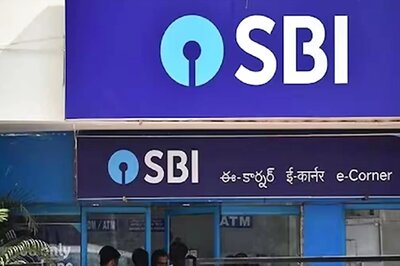
views
Private sector banks witnessed the most number of frauds in 2021-22, while public sector banks contributed the highest in terms of fraud value, according to the Reserve Bank of India’s (RBI) Annual Report 2021-22. It also showed that though the number of fraud cases reported by banks and other financial institutions during 2021-22 rose, the amount involved was half the amount involved a year ago.
“An assessment of bank group-wise fraud cases over the last three years indicates that while private sector banks reported maximum number of frauds, public sector banks contributed maximum to the fraud amount. Frauds have been occurring predominantly in the loan portfolio (advances category), both in terms of number and value,” the report added.
In terms of the number of fraud, private sector banks reported the highest at 5,334 cases in 2021-22, followed by public sector banks (3,078), foreign banks (494), small finance banks (155), payments banks (30), financial institutions (10) and local area banks (2), according to the report.
In terms of fraud value, public sector banks reported the highest amount during 2021-22 at Rs 40,282 crore, followed by private sector banks (Rs 17,588 crore), financial institutions (Rs 1,305 crore), foreign banks (Rs 1,206 crore), small finance banks (Rs 30 crore), local area banks (Rs 2 crore) and payments banks (Rs 1 crore).
The total number of frauds during 2021-22 stood at 9,103, against a higher 7,359 in the previous year. However, the total amount involved in all frauds during 2021-22 was Rs 60,414 crore, which is less than half of the Rs 1,38,211 crore reported in the previous financial year, according to the annual report.
“While the number of frauds reported by private sector banks were mainly on account of small value card/internet frauds, the fraud amount reported by public sector banks was mainly in loan portfolio,” the RBI annual report said.
Frauds have occurred in the loan portfolio, both in terms of number and value. In the number of frauds, advances constituted 42.2 per cent and in value terms it was almost 97 per cent at Rs 58,328 crore. Cards/internet constituted 39.5 per cent of the number of frauds but in value terms it was just 0.2 per cent.
It added that an analysis of the vintage of frauds reported during 2020-21 and 2021-22 shows a significant time lag between the date of occurrence of fraud and its detection — 93.73 per cent of the frauds in 2021-22 by value occurred in the previous financial years as against 91.71 per cent recorded in 2020-21.
Steps To Deal With Frauds
The RBI had launched its first global hackathon ‘HARBINGER 2021 – Innovation for Transformation’ in November 2021, with the following four problem statements: (a) innovative, easy-to-use, non-mobile digital payment solutions for converting small-ticket cash transactions to digital mode; (b) context-based retail payments to remove the physical act of payment from payment experience; (c) alternate authentication mechanism for digital payments; and (d) social media analysis monitoring tool for detection of digital payment fraud and disruption.
According to the annual report, the technology vision document for cybersecurity, which was released for UCBs on September 24, 2020, envisages achieving its objective through a five-pillared strategic approach named as GUARD, viz., Governance Oversight, Utile Technology Investment, Appropriate Regulation and Supervision, Robust Collaboration, and Developing necessary IT and cyber security skills set.
Read all the Latest Business News here




















Comments
0 comment